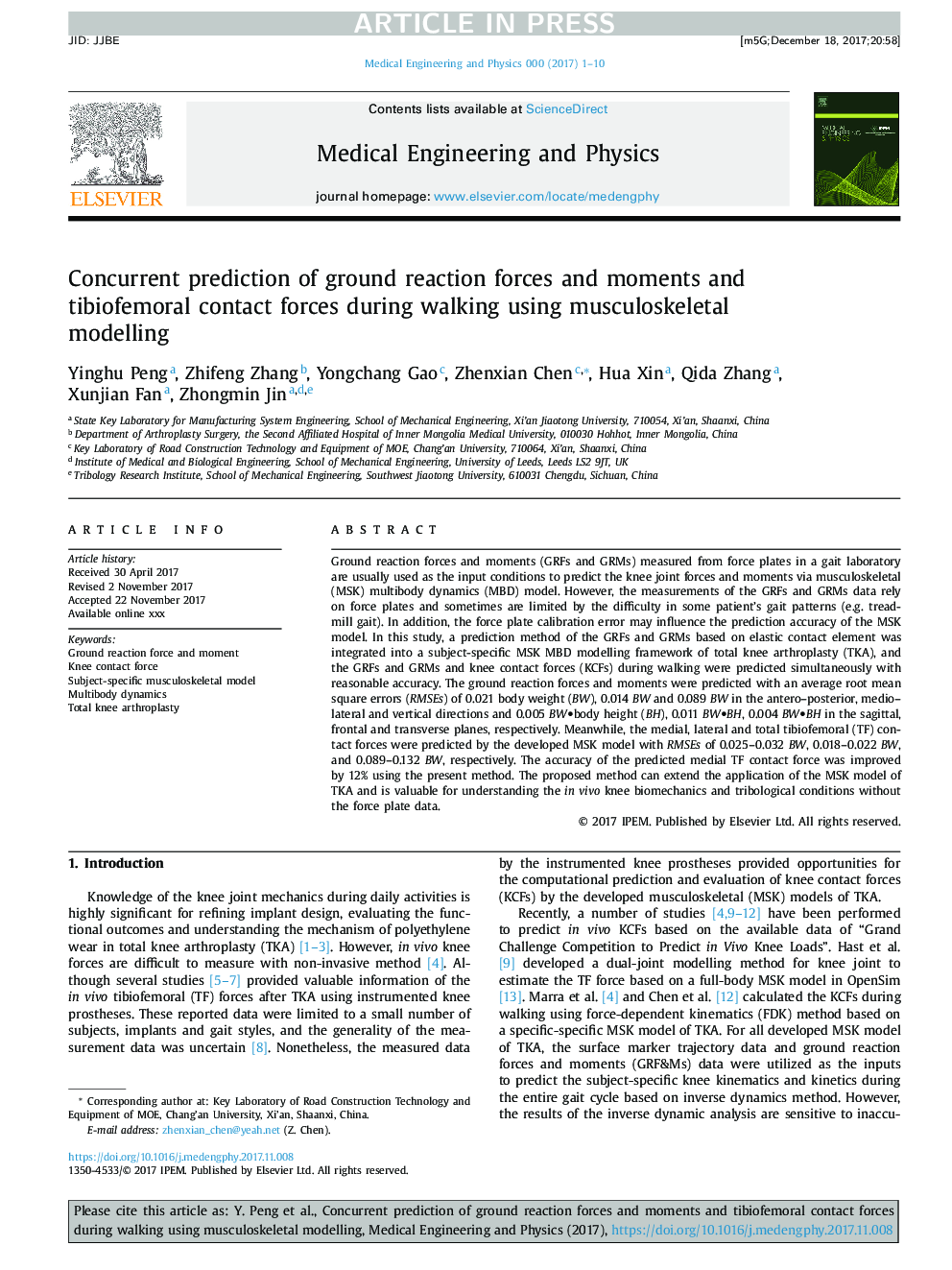| Article ID | Journal | Published Year | Pages | File Type |
|---|---|---|---|---|
| 7237472 | Medical Engineering & Physics | 2018 | 10 Pages |
Abstract
Ground reaction forces and moments (GRFs and GRMs) measured from force plates in a gait laboratory are usually used as the input conditions to predict the knee joint forces and moments via musculoskeletal (MSK) multibody dynamics (MBD) model. However, the measurements of the GRFs and GRMs data rely on force plates and sometimes are limited by the difficulty in some patient's gait patterns (e.g. treadmill gait). In addition, the force plate calibration error may influence the prediction accuracy of the MSK model. In this study, a prediction method of the GRFs and GRMs based on elastic contact element was integrated into a subject-specific MSK MBD modelling framework of total knee arthroplasty (TKA), and the GRFs and GRMs and knee contact forces (KCFs) during walking were predicted simultaneously with reasonable accuracy. The ground reaction forces and moments were predicted with an average root mean square errors (RMSEs) of 0.021 body weight (BW), 0.014 BW and 0.089 BW in the antero-posterior, medio-lateral and vertical directions and 0.005 BW
- body height (BH), 0.011 BW
- BH, 0.004 BW
- BH in the sagittal, frontal and transverse planes, respectively. Meanwhile, the medial, lateral and total tibiofemoral (TF) contact forces were predicted by the developed MSK model with RMSEs of 0.025-0.032 BW, 0.018-0.022 BW, and 0.089-0.132 BW, respectively. The accuracy of the predicted medial TF contact force was improved by 12% using the present method. The proposed method can extend the application of the MSK model of TKA and is valuable for understanding the in vivo knee biomechanics and tribological conditions without the force plate data.
- body height (BH), 0.011 BW
- BH, 0.004 BW
- BH in the sagittal, frontal and transverse planes, respectively. Meanwhile, the medial, lateral and total tibiofemoral (TF) contact forces were predicted by the developed MSK model with RMSEs of 0.025-0.032 BW, 0.018-0.022 BW, and 0.089-0.132 BW, respectively. The accuracy of the predicted medial TF contact force was improved by 12% using the present method. The proposed method can extend the application of the MSK model of TKA and is valuable for understanding the in vivo knee biomechanics and tribological conditions without the force plate data.
Related Topics
Physical Sciences and Engineering
Engineering
Biomedical Engineering
Authors
Yinghu Peng, Zhifeng Zhang, Yongchang Gao, Zhenxian Chen, Hua Xin, Qida Zhang, Xunjian Fan, Zhongmin Jin,
